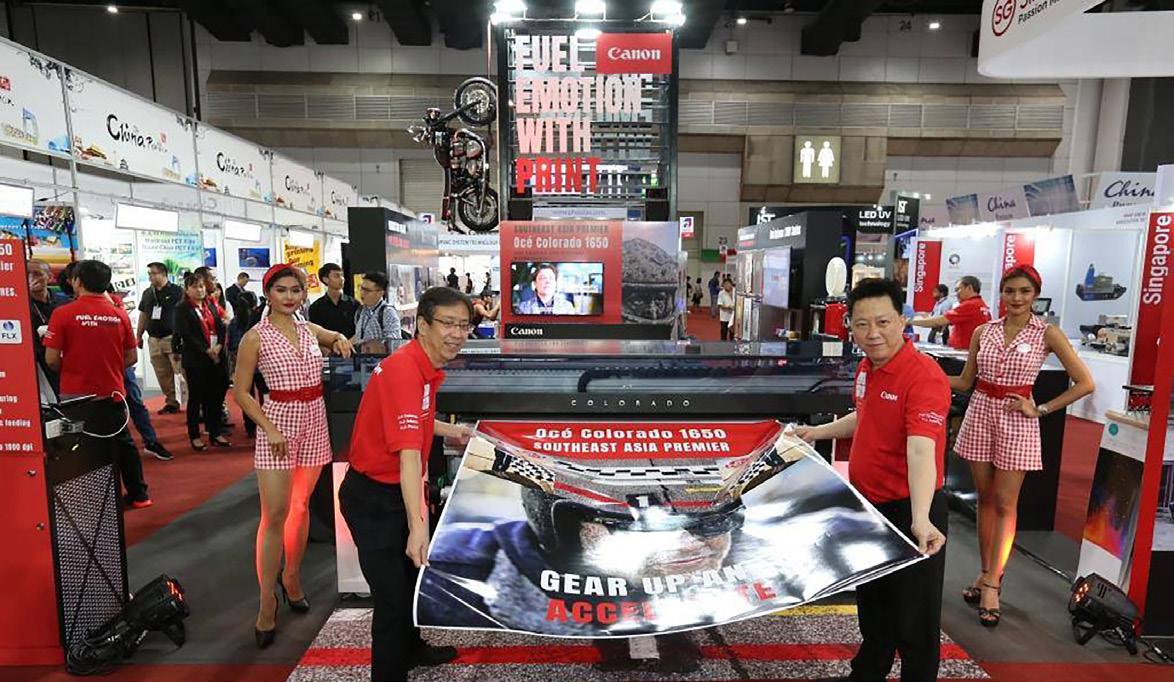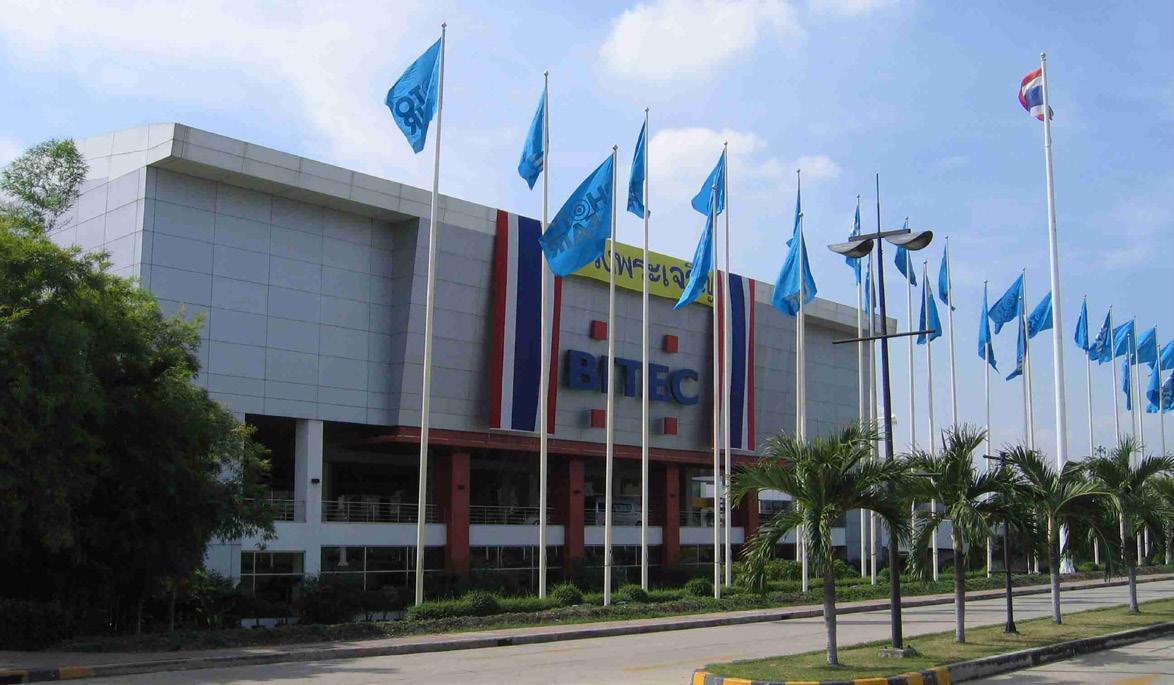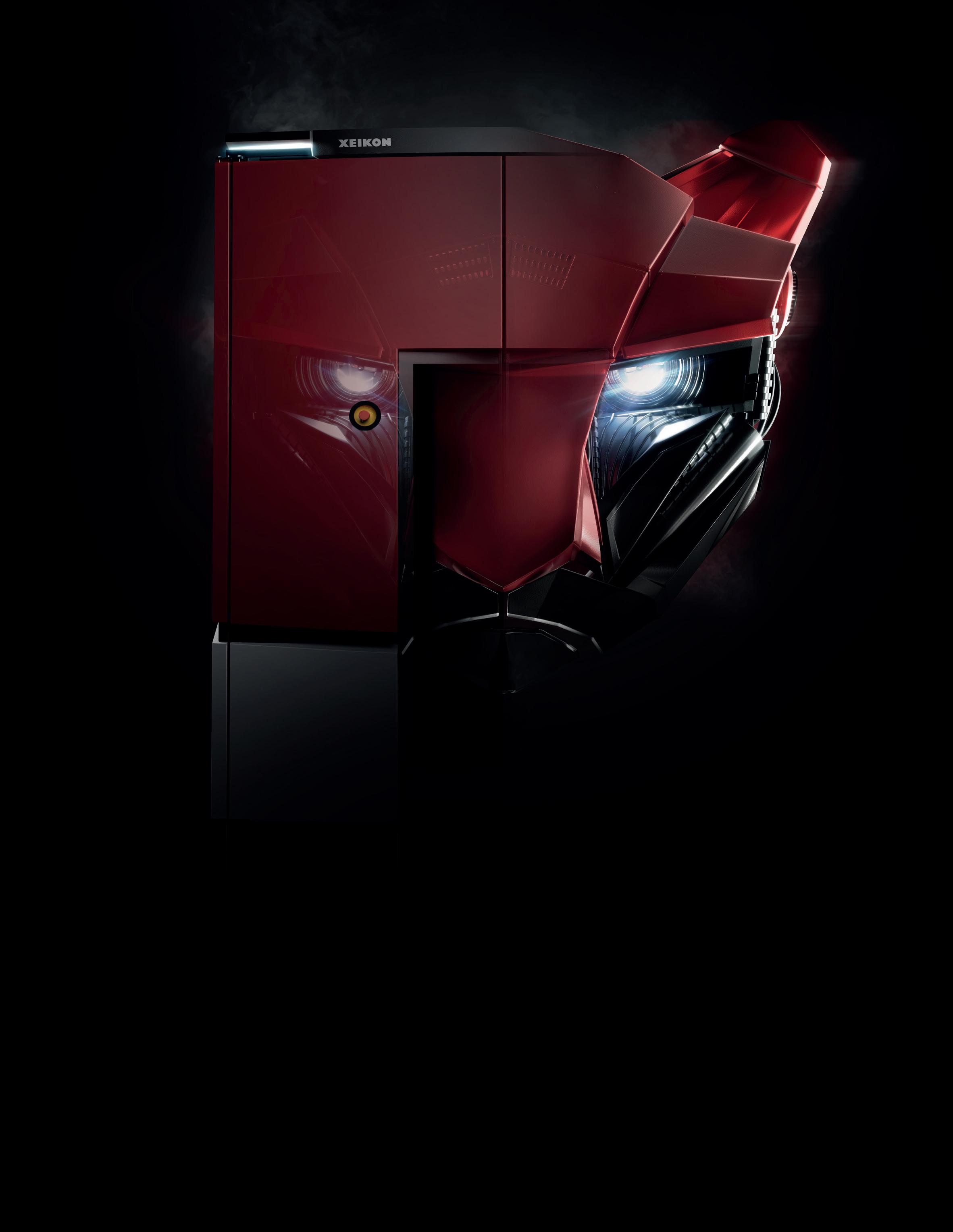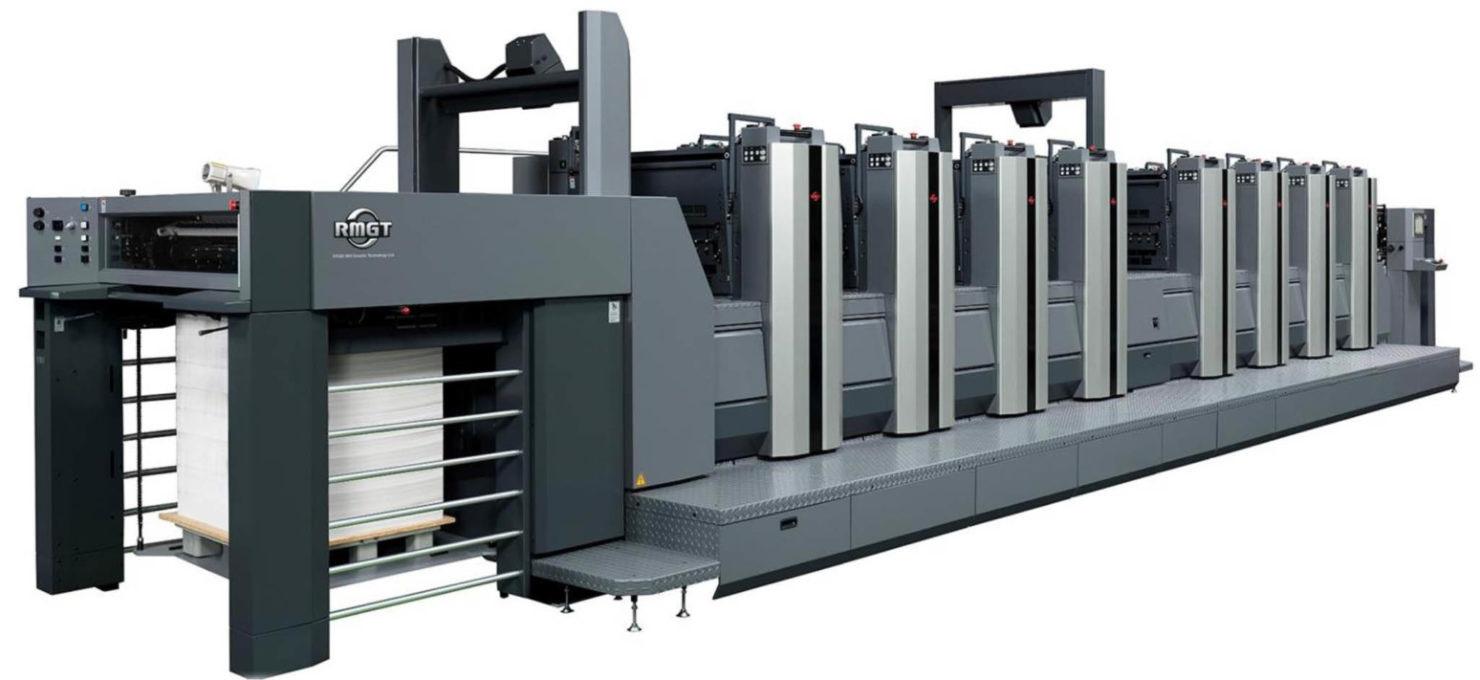
12 minute read
News from around the world
China company makes record breaking RMGT sheetfed press order
RMGT (formerly Ryobi) has secured its largest order for printing presses from Yintong Corporation in China. The order of 56 sheet fed presses comprise of 338 printing units.
RMGT stated that this is “its largest ever order for printing presses, and one of the most extensive orders placed with any supplier”.The presses ordered consists of primarily RMGT 920 series of sheet fed presses, including one 8-colour perfector, twenty four 920 9-colour presses and ten RMGT 920 4-colour presses. In addition there are ten RMGT 970 4-colour presses, ten RMGT 970 5-colour presses, and one larger format RMGT 970 8-colour perfector with LED-UV. The RMGT 970 model was launched in mid-2020.
Yintong is a web to print company. With the purchase, Yintong hopes to move closer to its goal of being the number one online printer in China. The presses will be delivered and installed over the next three years at a number of sites across China.
The purchase was signed at China Print 2021 with RMGT’s distributor in the country, Dinga. In order to keep to timelines and ensure other customers are not neglected, RMGT has recruited additional staff.
EFI launches entry-level Blaze textile digital printer
At the Shanghai tradeshow, ITMA Asia, EFI Reggiani unveiled the new Blaze scanning printer for textile printing. The printer is described as an industrial, entry-level smart solution to help “textile companies blaze their successful trail into the world of efficient, sustainable industrial inkjet printing”.
The launch of Blaze is the first in a series of 2021 product introductions coming from EFI Reggiani. In July, a higher-volume EFI Reggiani HYPER is expected to debut.
“Despite the impact of the pandemic, EFI Reggiani has continued to invest and develop the next trailblazing technology for the textile market,” said EFI Reggiani Senior Vice President and General Manager Adele Genoni. “Our customers are our number one priority no matter how small or big they are. With the EFI Reggiani BLAZE, we are able to offer an ideal solution for companies that want to enter the industrial textile digital printing space. We are excited to be able to offer such a solution and look forward to embarking on this journey with our customers.”
The 1.8-meter wide printer EFI Reggiani BLAZE printer is a compact solution equipped with printhead reliability and low maintenance costs for a competitive total cost of ownership.
It has an innovative, low-maintenance, continuous recirculation ink system equipped with a level sensor and degassing as well as a printhead crash protective system for longer printhead life and superior uptime. It can produce up to 125 linear metres per hour with a printing resolution up to 600x1200 dpi.
• The printer has eight 300-dpi dual channel printheads and can print in up to eight colours with full variable drop size.
EFI Reggiani TERRA Silver enhancement
EFI has also released an enhanced version of the EFI Reggiani TERRA Silver printer, a 1.8-metre wide printer operating with EFI Reggiani’s TERRA pigment ink with binder solution for high-quality, highly sustainable, directto-textile printing without steaming or washing.
The new-version is equipped with features such as a new recirculating ink system, real-time image processing, several printing modes, and a moreefficient polymerization process.
At ITMA Asia, the company announced a new service provided to Chinese customers, offering EFI Reggiani AQUA water-based reactive inks that it is now manufacturing in China. Designed to deliver outstanding quality on cotton, silk, viscose rayon, linen and lyocell, AQUA inks are ideal for producing home textile and fashion products with deep, intensive colours.
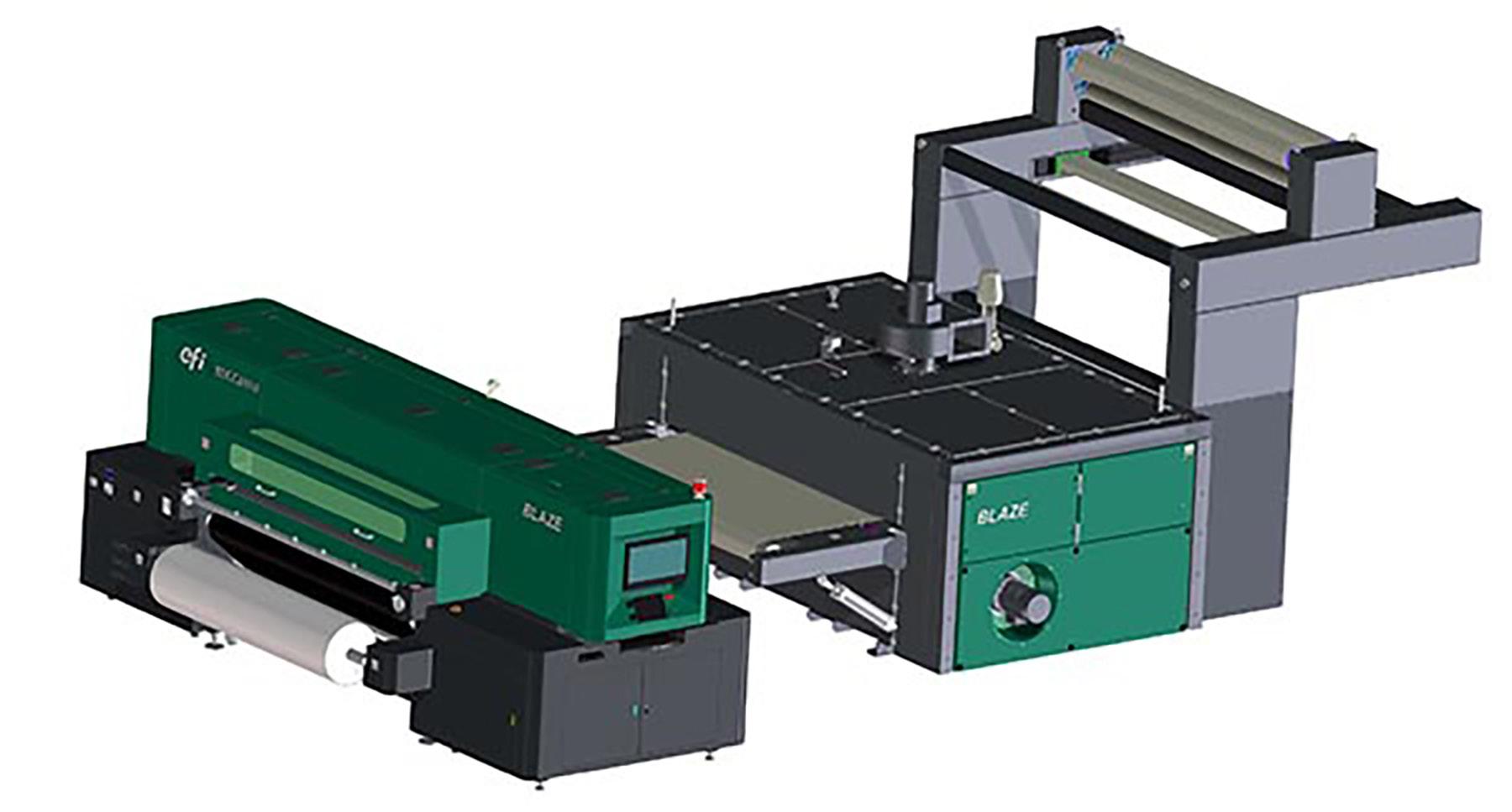
Heidelberg sells DOCUFY software subsidiary
Heidelberg announced that it has sold the software provider DOCUFY GmbH to the investment company Elvaston Capital Management. With the sale, Heidelberg expects an EBITDA margin in a range of 7-7.5% for the full year 2021/22, raised from its previous forecast of 6-7%. The transaction is expected to result in a gain on disposal of more than 20 million Euro.
This is part of Heidelberg’s continued focus on its cloud-based digitization strategy in its core business. In December 2019, Heidelberg had bundled its own peripheral software activities at DOCUFY, which usefully complemented DOCUFY's existing portfolio.
This step will allow Heidelberg to further advance its unique positioning in cloud and data-based software and the corresponding range of different products and services tailored to customers in its core business. "As part of our portfolio analysis and concentration on our core activities, we have come to the conclusion that DOCUFY's planned strategy for the future can be supported in a more targeted manner by a new partner.
We are focusing our software activities on the expansion of cloud-based applications and platforms for the printing industry," said Rainer Hundsdörfer, CEO of Heidelberg. "We will use the funds freed up by the sale to drive forward strategic future investments on the path of our digital transformation." DOCUFY provides software that develops and sells high-quality software products and solutions as well as consulting and implementation services, training, and SaaS services. The DOCUFY Software Suite enables companies to optimize their processes, from the acquisition of information, to the processing and targeted distribution, to the application of the right information, and thus to contribute to the sustainable success of the company.
"We are looking forward to realizing our DOCUFY 2025 strategy with the help of Elvaston," said Stefan Donat, CEO of DOCUFY GmbH. "This will allow us to further expand our offering for our existing and future customers." With around 120 employees, DOCUFY counts several major industrial companies among its customers and, like Heidelberg, will continue to support them in implementing their digitization strategies.
DOCUFY's new strategy, based on the expansion of the DOCUFY software suite into an Industry 4.0 InfoHub, the establishment of new strategic partnerships and the internationalization of business activities, has aroused great interest among customers and existing partners. The consistent realization of this approach is now ensured by Elvaston.
"We are continuing to systematically streamline our structures and focus the portfolio on the core growth areas. This creates further financial scope for Heidelberg," said Chief Financial Officer Marcus A. Wassenberg. "Together with the good order situation, we can raise the forecast for the current year despite increased material costs." www.docufy.de
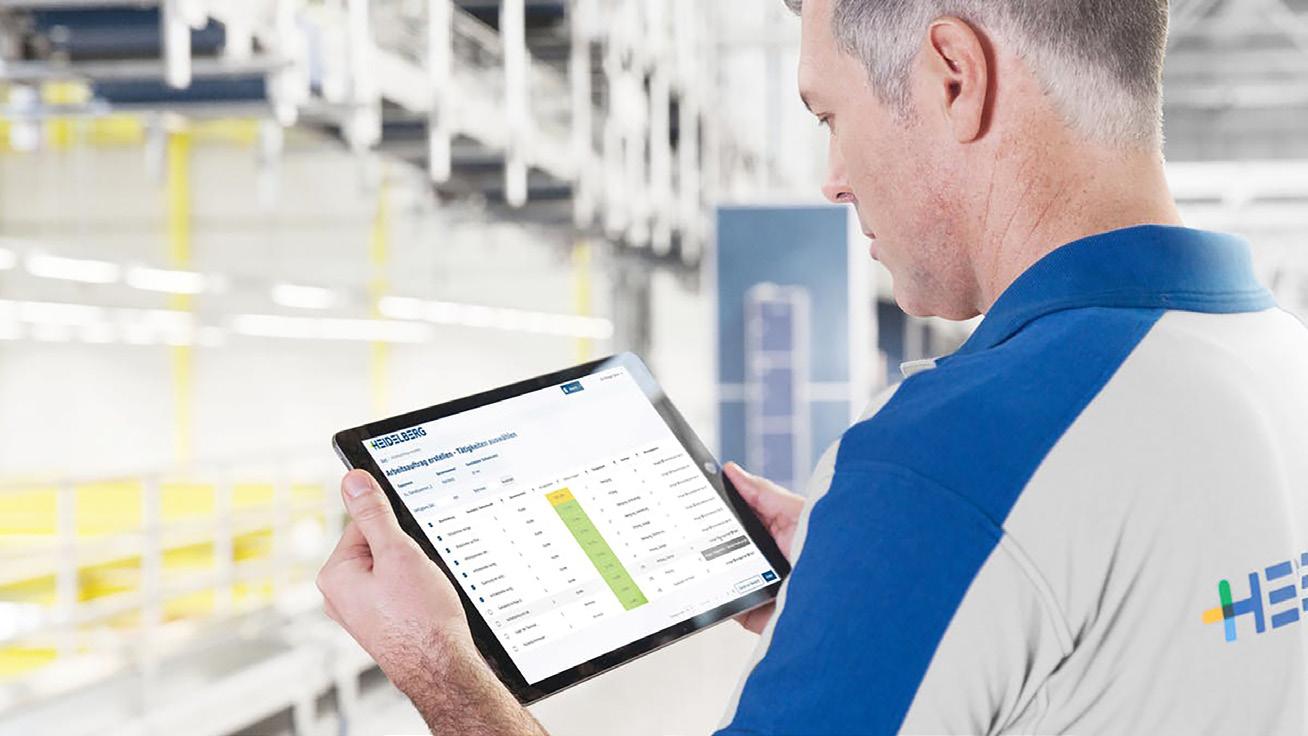
LitiHolo Introduces World’s First Desktop 3D Hologram Printer
The idea of hologram printing has been in people’s minds for a long time, and to this day researchers and companies are making advances in the field, trying to get closer to the ideal hologram print. The latest progress comes from the company LitiHolo, as the business introduced the world’s first 3D hologram printer for people to use at home.
What has been a long time dream for many, could soon become normal for everybody. The ability for anyone around the world to print real threedimensional holograms at home or in an office is one step closer to becoming reality. LitiHolo, a global leader in hologram production and technology, unveiled its Desktop 3D Hologram Printer. Read on to find out more about the history of hologram printing and what the current advancements look like!
History of Hologram Printing
Even though everybody has heard of them, holograms have remained out of reach for most people to make themselves or at home. Yet, the solution for improved 3D visualization could lead back to a 60-year-old technology reshaped for the digital world, namely holograms. Scientists
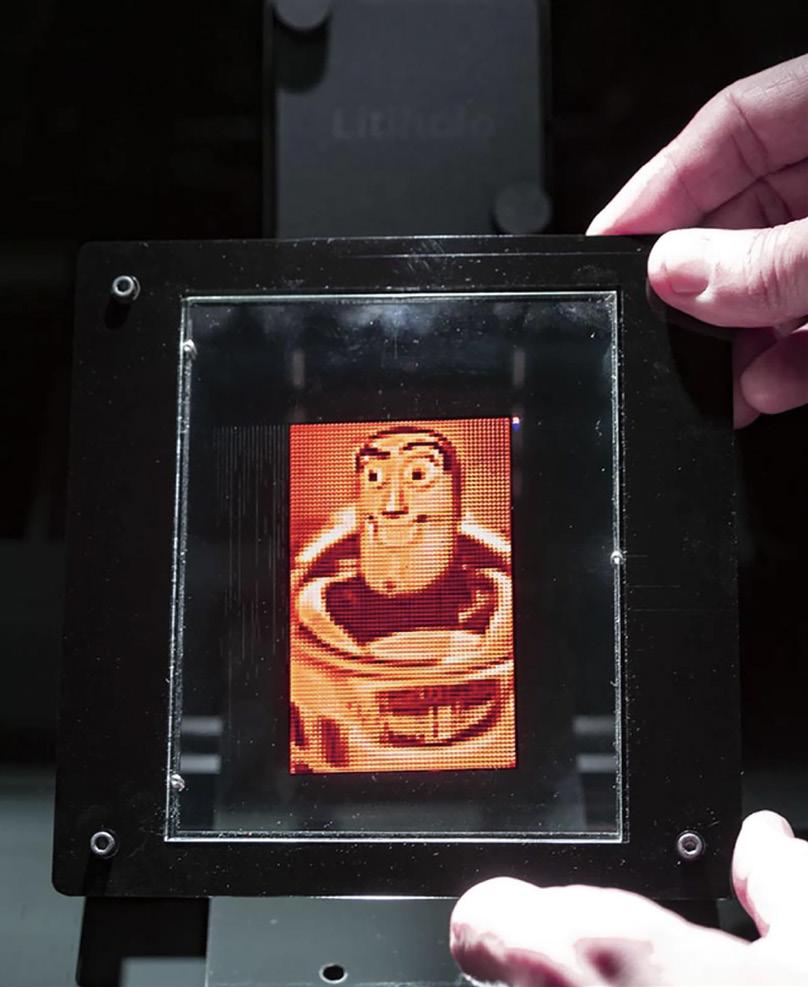

CANON SINGAPORE PTE. LTD.
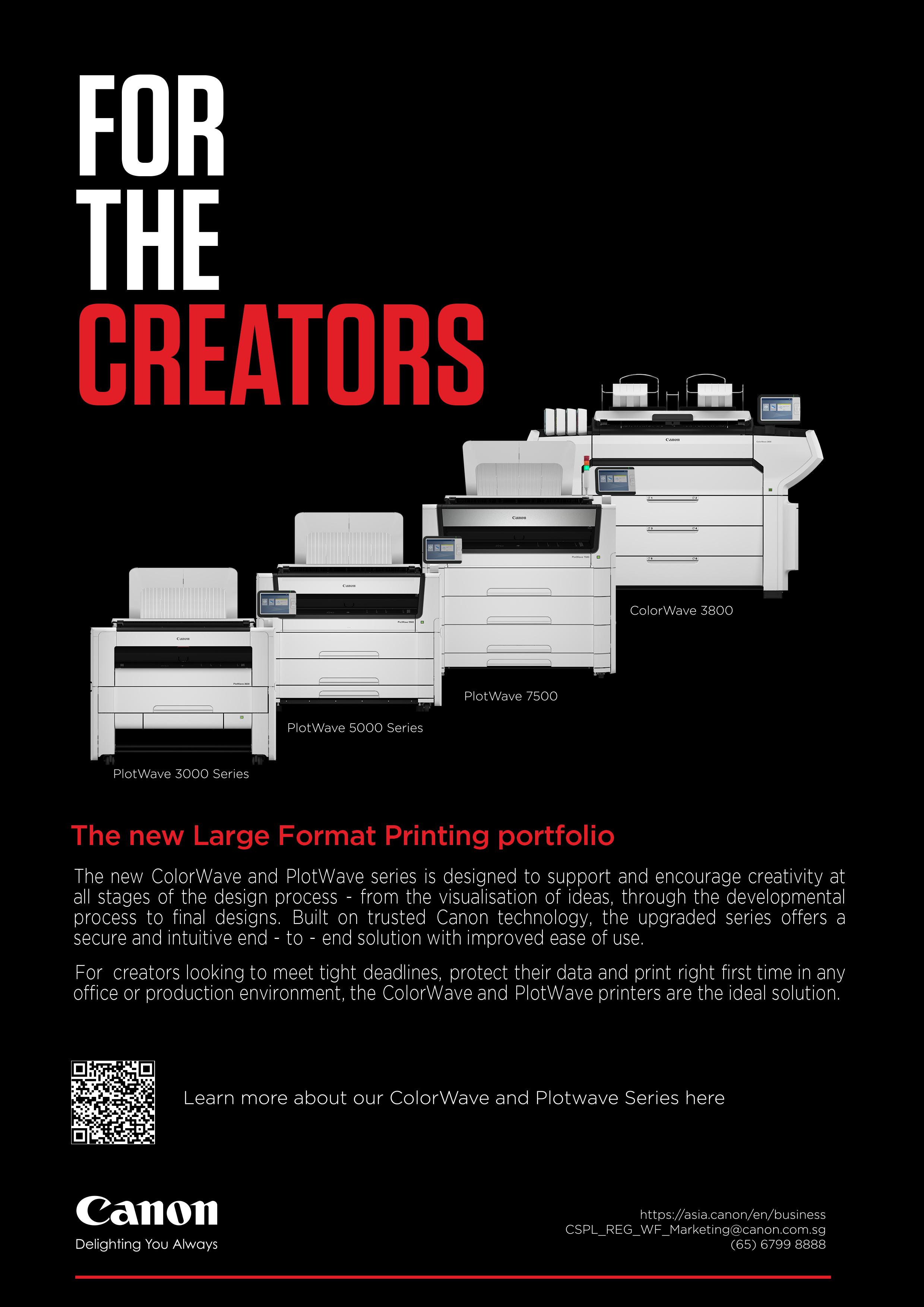
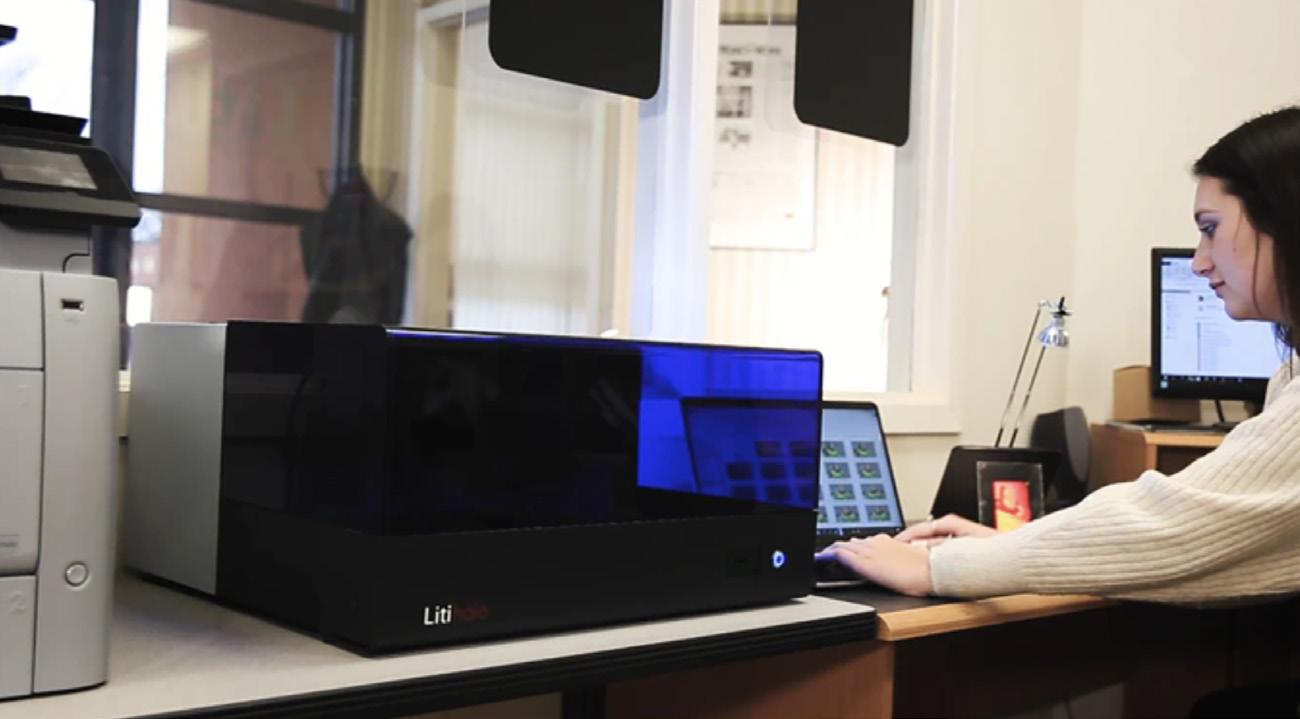
have wanted to make computergenerated holograms for a long time, but the process has usually required a supercomputer to churn through physics simulations, which is timeconsuming and can produce less-thanphotorealistic results. However, by now, the technology has made huge advances.
Initially developed in the mid-1900s, holograms used to be recorded optically. By splitting a laser beam, with half the beam used as a reference for the light waves’ phase and the other half employed to light the subject. This creates a hologram’s unique sense of depth. The subsequent images were stationary, which means they couldn’t capture motion. Furthermore, they were hard copy only, making them problematic to share and reproduce.
Computer-generated holography circumvents these challenges by simulating the optical setup. However as mentioned earlier, running the physics simulations takes time for every single hologram-image. One of the advances the technology has made is the switch from letting the supercomputers run the physics simulations to letting them teach physics to itself.
Scientists used deep learning to accelerate computer-generated holography, permitting real-time hologram creation. The team designed a neural network — a processing technique that uses a chain of trainable tensors to mimic how humans take in visual data. Developing a neural network requires a high-quality, large dataset, which didn’t formerly exist for 3D holograms. They constructed a custom database of 4,000 pairs of computer-generated images. By learning from each image couple, the network adjusted the parameters of its own calculations, consecutively enhancing its capability to make holograms. The entirely optimized network worked through big hologram orders faster than physics-based calculations, making it much more efficient.
Holograms bring an extraordinary depiction of the 3D world around us, while looking astonishing at the same time. They offer a fluid perspective created by the viewer’s position, and they let the eye to regulate focal complexity to interchangeably focus on foreground and background.
Hologram Printing from Home
LitiHolo produces hologram kits and they also manufacture a selection of holography film that enables hologram production without chemical usage. Development of the Desktop 3D Hologram Printer is a great breakthrough in LitiHolo’s mission to make true hologram technology more accessible and affordable for the masses. The printer is designed to let users make their own holographic images from the comfort of their home, with the printer being only a little bigger than a regular home version.
The printer creates true holograms that can be viewed without glasses or headsets, providing a unique 3D experience that can effortlessly be viewed and shared with other people. That means printer users can design everything from 3D computer graphics scenes to hologram portraits that can be seen as true threedimensional holograms.
The printer takes multiple angle pictures, captured from video footage, a camera, or rendered from a typical 3D graphics design, and cuts them into unique recordings for each separate pixel on the hologram. This is called a “hogel” or “hologram element” and each hogel’s size is 0,03×0,03 inches (1×1 mm). The printer then etches that hogel data with modulated light onto the special hologram film, which is self-developed by the company, to create a bright and clear hologram.
In its completed version, the hologram recreates the numerous diverse viewpoints as if the 3D image is actually there. This gives the ability to look around the image to perceive different perspectives, even from underneath and above. Based on the viewing angle it can also seem like it is moving.
The final result is a somewhat pixelated image with a red overtone. The printer can produce holograms up to 4×5 in (10.1×12.7 cm), with a 45-degree field of view. Due to the fact that up to 23 images per pixel can be encrypted, the holograms can present several seconds of motion as the viewer moves their head or tilts the image.
Usage and Future
As LitiHolo mentions, this printer is not only designed to entertain people who want to 3D print holograms of videos or photos, as it is also useful to produce holograms from CAD designs, 3D art and 3D computer graphics. It has a wide variety of uses and all that’s needed is a computer and the printer.
“Holography has evolved a great deal in the 60 years since its introduction and we view our Desktop 3D Hologram Printer as an important next step in bringing this technology to the masses. For the first time, the power to create true holograms will be accessible to anyone with one of our printers, which opens up a whole new world of hologram possibilities,” said Paul Christie, LitiHolo CEO and MIT Media Lab alumni.

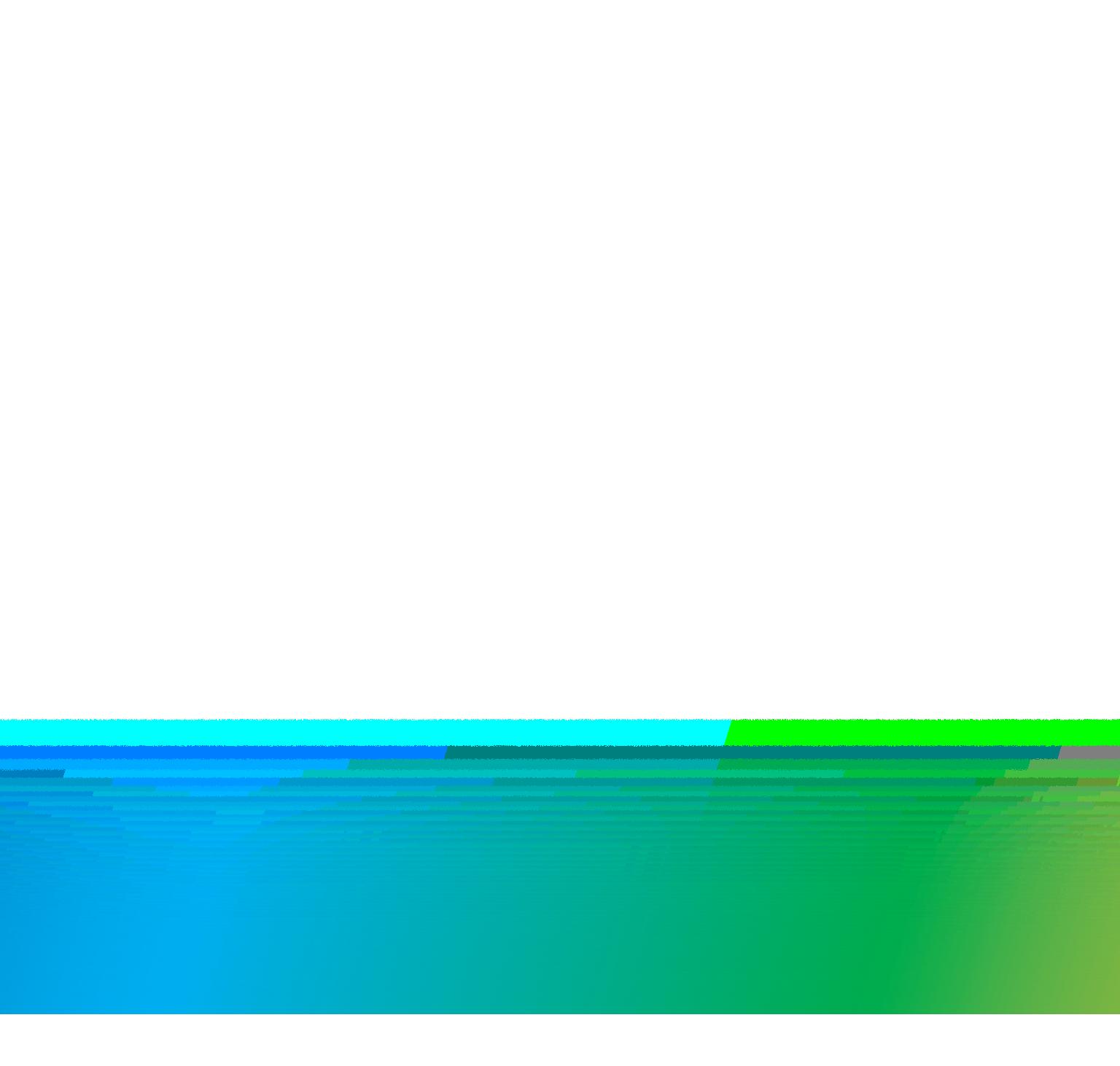
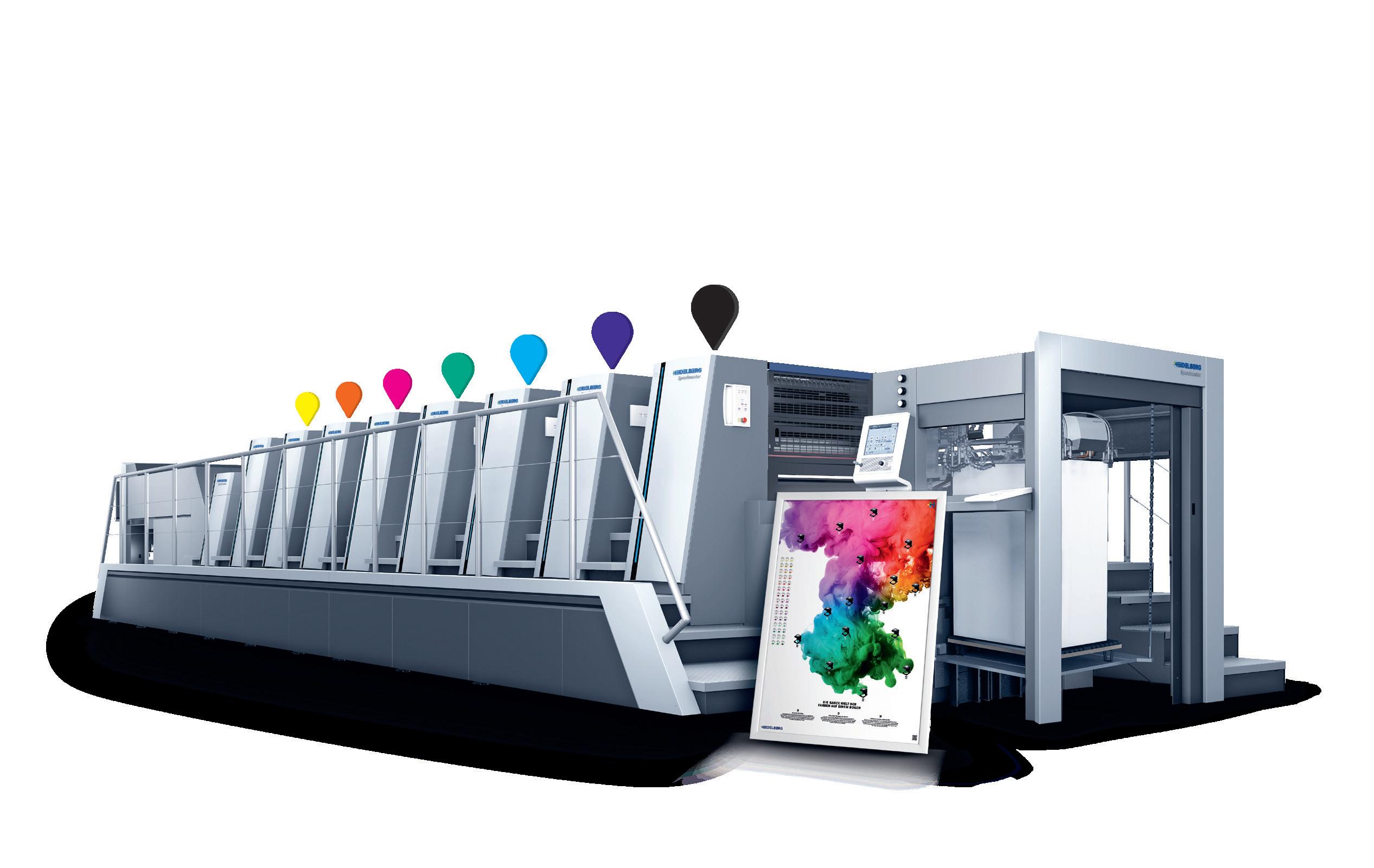

Next to private use, LitiHolo believes its Desktop 3D Hologram Printer can be a door opener for holography to influence industries such as engineering, entertainment and architecture.
10-15 production orders produced daily within weeks of installation
Boxes Inc was the first company in the USA to install the flagship Highcon® Beam 2C digital finishing system for corrugated earlier this year.
The company added the Beam 2C to their digital workflow primarily to support their online, customized packaging web-to-pack site, Xceed but is now also expanding usage to support other more traditional parts of their organization. Describing the install as its easiest ramp-up ever, Boxes Inc. benefitted most from the increased speed-to-market afforded by Highcon’s digital finishing technology.
With a clear commitment to excellence, this industry leader, together with subsidiary Mid America Display, has been producing industrial shipping and packaging products, POP displays and signage for over 40 years.
According to Jason Mueller, Sr. Vice President, General Manager, “We have installed a number of new machines oveeir customers’, sustainability objectives, while det to get the optimal ink transfer – ink starvation to the anilox can occur. This will be evident once the doctor blade is applied. If this was not noticed when the anilox was applied to the plate and impression set, you will see the starvation results.
system has been developed to significantly improve and repair basic paper properties, and to increase the smoothness of the run through the press and finishing equipment.
Mr. Kyburz continues, “If you finish inline, the paper gets stressed. We believe remoistening will help especially with the Canon ProStream 1800 press. It has a huge dryer (up to 180 degrees) so there is a lot of heating energy. The paper becomes wet one side due to the ink, then it is dried, following that the process continues on the other side of the paper. Remoistening will help us to apply more folds and prevent it from breaking and let the press line run faster.
PACK PRINT INTERNATIONAL and CorruTec ASIA Rescheduled to 19 – 22 October 2022
The new dates for PACK PRINT INTERNATIONAL and CorruTec ASIA have been set for 19 – 22 October 2022 at BITEC, Bangkok. The move from the original February dates to October was deemed necessary to optimise participation for all involved in view of the on-going ban on large scale events in Bangkok, which is still marked a dark red zone in Thailand.
The varied quarantine requirements for returning international travellers are also a considerable factor, making it extremely challenging for stakeholders to plan their participation with confidence and certainty.
The team will reach out to all industry partners, confirmed exhibitors and participants regarding event logistics and planning. Participants may also contact ppi@mda.com.sg and corrutec@mda.com.sg for immediate assistance.
